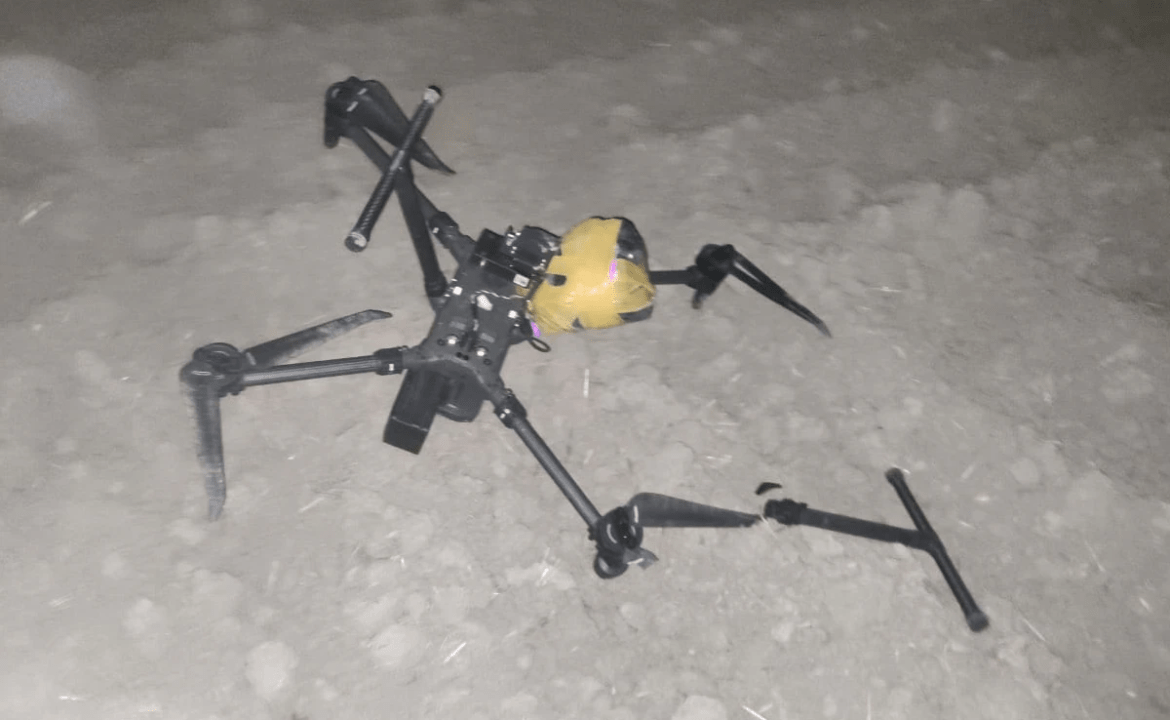AI Generated Summary
- In India, the assault on the Air Force base in Jammu in June 2021, suspected to have been carried out by members of Lashkar-e-Taiba, marked the first recorded instance of drones being used for terrorist attacks within a domestic context.
- As per the Punjab government, the first known instance of a drone delivery of arms and ammunition occurred in August 2019, and this threat has only escalated since then.
- The frequency of these incidents has escalated in June, with the Border Security Force (BSF) reporting around 8 cases in just the first 13 days of the month.
Drones, with their ability to gather real-time intelligence and execute surveillance tasks, are increasingly integral to military arsenals globally. These compact and cost-effective tools are not only accessible to legitimate state actors, but also to rogue factions, thanks to the advancements in UAV technology. Their easy operation, affordability, and stealth capabilities make them desirable for various purposes. Instances of armed drone usage in conflicts like the Western Libyan military clash, the Armenia-Azerbaijan dispute, and the ongoing Russia-Ukraine conflict underscore their strategic significance.
A significant global wake-up call to the growing drone threat was the 2019 drone attacks executed by Yemen’s Houthi rebels against two Saudi Aramco oil company facilities. Moreover, in India, the assault on the Air Force base in Jammu in June 2021, suspected to have been carried out by members of Lashkar-e-Taiba, marked the first recorded instance of drones being used for terrorist attacks within a domestic context.
Border regions, particularly along the India-Pakistan frontier, have long served as vital channels for the illicit trade of narcotics, counterfeit currency, weaponry, and other contraband. As per the Punjab government, the first known instance of a drone delivery of arms and ammunition occurred in August 2019, and this threat has only escalated since then. Data from the Border Security Force (BSF) and open-source information suggest that the occurrences of drones carrying narcotics, weapons, and ammunition across the border have more than doubled from 2021 to 2022.
The state of Punjab has emerged as a central hub for these smuggling activities, with border areas like Fazilka, Firozpur, Tarn Taran, Gurdaspur, and Amritsar serving as key entry points. Punjab’s proximity to the so-called ‘Golden Crescent’, a notorious heroin-producing region encompassing Pakistan, Afghanistan, and Iran, adds to the complexity of the situation. According to Indian authorities, the Inter-Services Intelligence (ISI) agency of the Pakistan Army has been implicated in supporting these smuggling operations.
In most cases items that were being transported through drones from Pakistan and had been captured by efforts of BSF and Punjab police were Heroin. Among all cases recorded since January, around 88% cases have been those of Heroin. However, in few cases arms have also been illegally transported across the border. There have also been instances where drones have been found in empty fields without anything attached to it according to BSF officials. Since the drones used are very sophisticated it could be used for collecting visual images, sending live feed through cloud, etc.
Punjab police officials for the first time succeeded in arresting a person who was operating the drone from this side of the border for smuggling drugs from Pakistan.
The accused has been identified as Lakhwinder Singh alias Lakha, a resident of a border village of Ajnala town and is involved in drug trafficking through drones. In further interrogation, he also revealed that this was not his first consignment.
Since February, there have been approximately 9-10 instances every month of Pakistani drones breaching our borders. The frequency of these incidents has escalated in June, with the Border Security Force (BSF) reporting around 8 cases in just the first 13 days of the month. The majority of these infiltrations, recorded by Border Security Force, have occurred in all border districts except Pathankot, with Amritsar being the hotspot.
For transporting larger shipments, Hexacopter drones are employed. These “six-winged drone worth Rs10 lakhs” according to DGP Punjab, are assembled with components from the USA and China and feature advanced capabilities such as long-lasting battery backup, infrared-based night vision cameras, and GPS systems.
The commonly used drone model in many of these cases is the black quadcopter4 known as “DJI Matrice 300 RTK,” which costs $13,700. This drone boasts a range of 15 kilometers, supports night vision, has a flight time of up to 55 minutes, offers cloud connectivity for live stream feeds, and can carry a payload of up to 2.7 kilograms. The Matrice 300 RTK are DJI’s latest commercial drone platform. The DJI is a Chinese technology company headquartered in Shenzhen, Guangdong, backed by several state-owned entities.
The burgeoning use of drones in illicit activities introduces a host of complex challenges. Critical questions abound, such as how these high-tech machines end up in the possession of drug traffickers, whether there’s a broader network assisting in their operation, and the origin of the funding for these costly devices. These queries gain complexity in light of the increased security measures along the borders. It is clear that this issue of drone misuse is not merely a technological concern but one that intertwines economic, logistical, and technological factors. Addressing these concerns necessitates global cooperation, as our response will undeniably shape the future of international security, law enforcement, and drone technology regulation.




